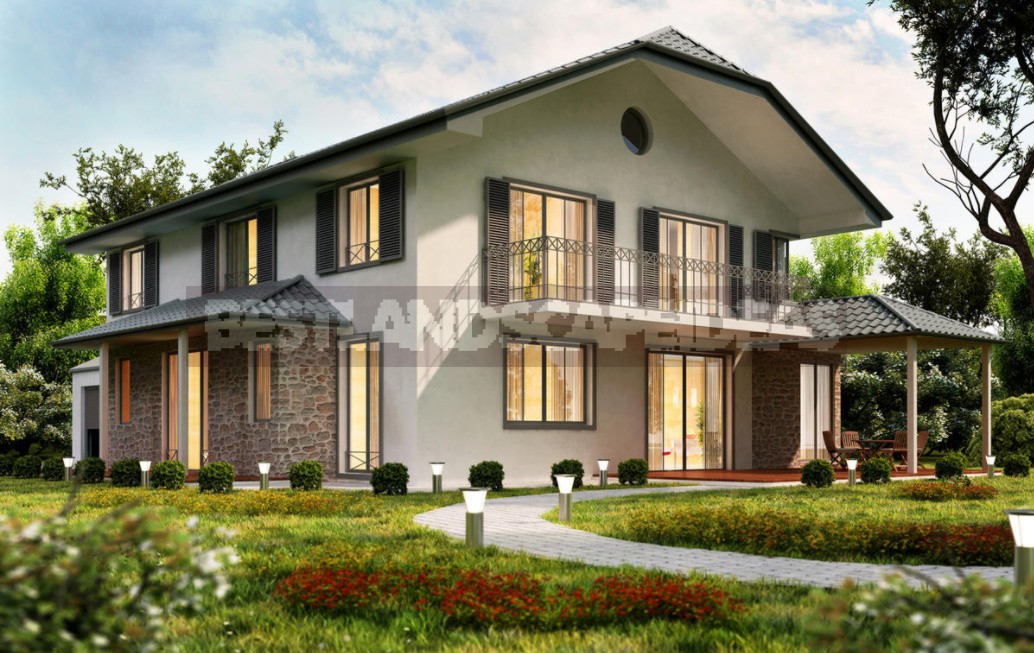
What materials should be used in the construction of suburban housing, so that it is comfortable at any time of the year, and the cost of heating does not result in an astronomical amount? Consider a few popular options for a stone house.
Bricks and ceramic blocks
Brick buildings are characterized by strength and reliability, such buildings can be used for more than 100 years. However, there are many disadvantages to the brick.
This material is hardly cheap. In addition, for a brick house, due to the large weight of the walls, you need either an expensive foundation to the depth of freezing, or a full-fledged basement-basement. Another solution is a massive slab foundation with stiffening ribs, which is also very expensive. In addition, it will require a lot of time for manufacturing, in particular, for setting concrete.
The mortar inside the walls, if they are thick, also dries for quite a long time — sometimes for a whole year.
Shrinkage in a brick house is not as strong as in a wooden one, but it is still present. As a result, the construction period is usually extended to two years.
The heat-insulating properties of the brick leave much to be desired: in order to meet the standards for heat conservation, the wall thickness of it should be at least 1.74 m. Naturally, no one builds walls of such thickness. Usually use either a porous hollow brick, which has better thermal conductivity, or large-format ceramic blocks. But even they, taking into account the masonry mortar, have a small resistance to heat transfer. The walls of them should be 72 cm thick.
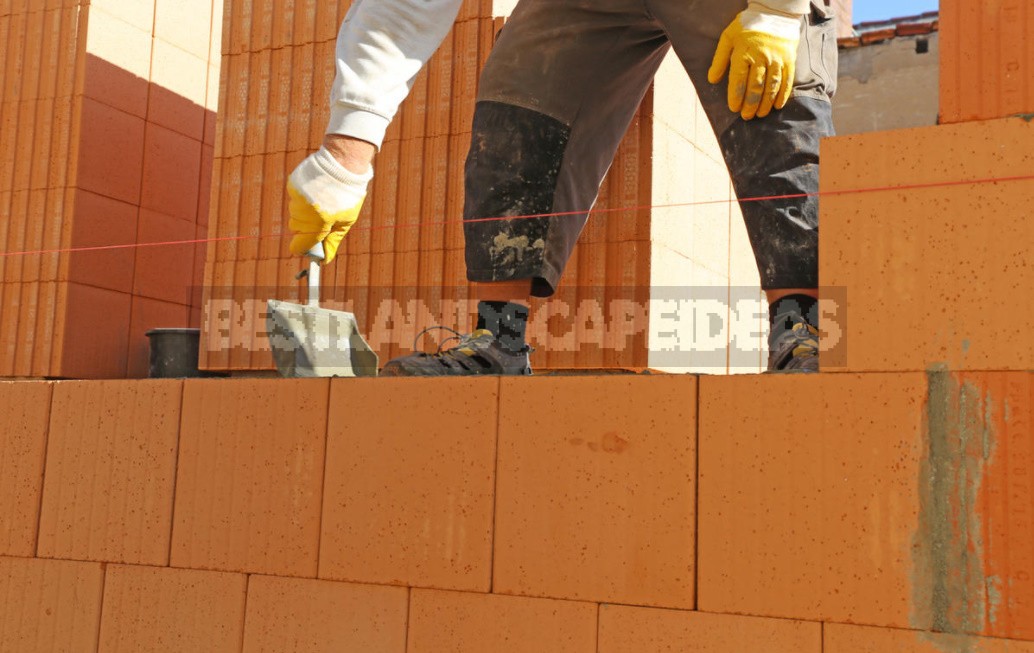
The best way to insulate a brick house is to use the so-called well masonry. First, a thick load-bearing wall is built, a heater is mounted on it, and then the facade is finished with a face brick. Or they sew foam on the masonry and then finish the “wet facade” type: plaster or glue clinker tiles, which is also not very cheap.
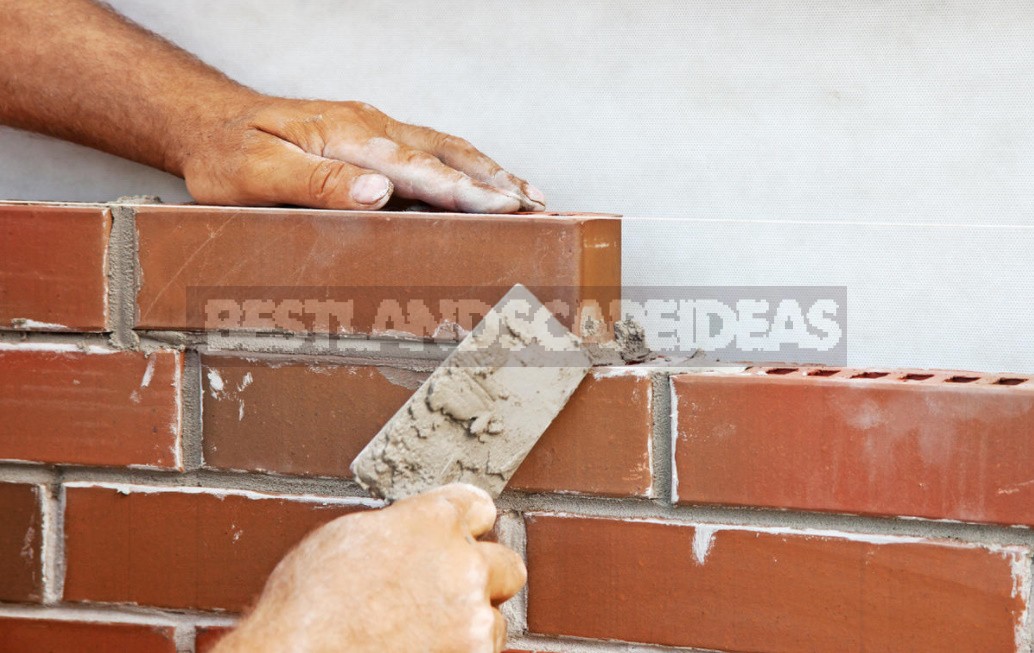
And yet, such a house, in comparison with other stone buildings — the best choice. It is strong, reliable, and with a sufficient amount of insulation in the walls, it is also warm.
Blocks of expanded clay concrete
A less expensive option than a brick house can be a building made of expanded clay concrete blocks. In them, expanded clay is used as a filler, and cement mortar is used as a binder. At the same time, the blocks are available in two types: full-bodied and hollow.
The advantages of the material are the same as those of brick: strength, durability, ease of operation. Due to the heterogeneity of the “concrete + expanded clay” structure, the stability of the material is slightly worse than that of a brick, but not much, so it can also be written down as an advantage.
Despite the fact that expanded clay concrete blocks in terms of cubic meters are slightly cheaper than bricks, the cost of the walls still comes out quite high. Given that you need a strong foundation, the total cost of the box house will also be rather big;
Due to the large size of the block, there will be fewer mortar joints in the walls. Such masonry dries a little faster than brick, but the overall construction period is still long — a year or more.
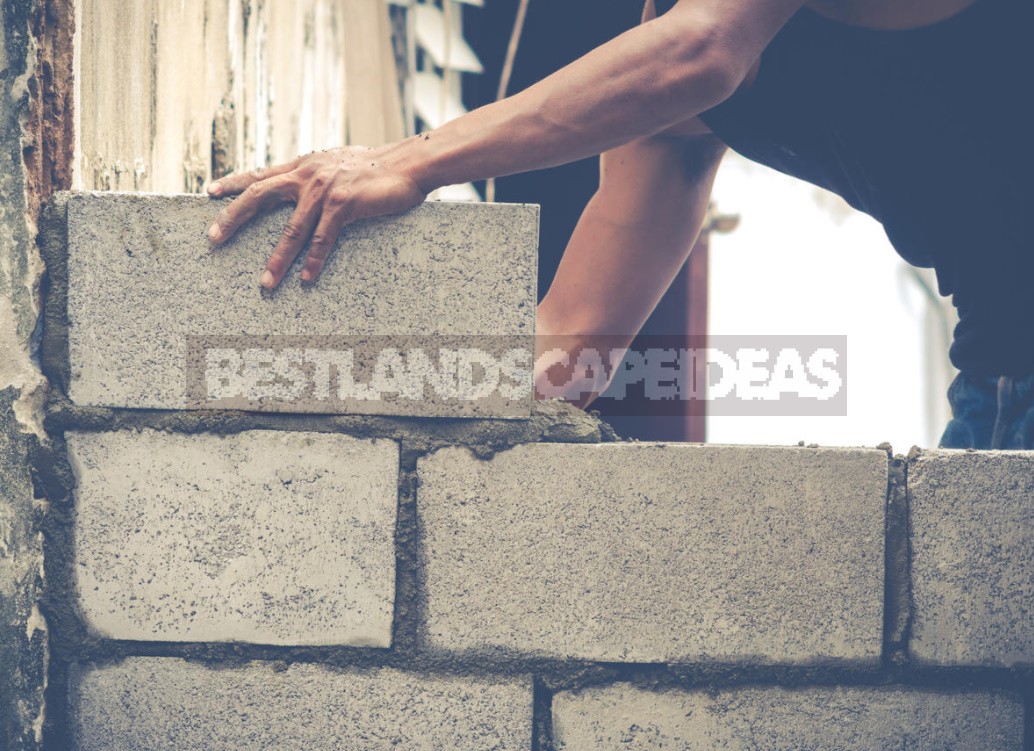
As for heat saving, the hollow expanded clay concrete block has a lower thermal conductivity than the ceramic one: to meet the standard for heat saving, at least 65 cm of homogeneous material is needed. However, everyone understands that these values are possible only with blocks of ideal geometry, which is rare for expanded clay products. And taking into account the rather thick mortar joints, which are cold bridges, the required wall thickness grows to a meter.
The way out of the situation is the same-well masonry. We make a load-bearing wall of expanded clay concrete of the required thickness, insulate the outside with insulation, and then either plaster, or also collect the brick face masonry.As a result, we will get what we need-a warm and solid home. However, although it is slightly cheaper than brick, it is still impossible to call it very cheap.
Cellular concrete
Foam and aerated concrete blocks are very popular materials. Their advantages are well known to builders. First, they have good thermal insulation characteristics. To meet the norm for heat saving, you need a wall thickness of 45 cm from blocks with a density of 400 kg / cubic meter. m and 63 cm — for blocks with a density of 500 kg / cubic meter. In any case, the wall thickness is not so great — let’s remember a brick wall with a thickness of 2 m.
Secondly, the total weight of the house with all this is not so much in comparison with a similar building made of bricks and expanded clay blocks. It makes sense to make a less powerful foundation, which will allow you to save well.
Third, factory blocks made of gas silicate have excellent geometry, so when finishing, you can do with thin plaster outside and inside — also quite a budget solution.
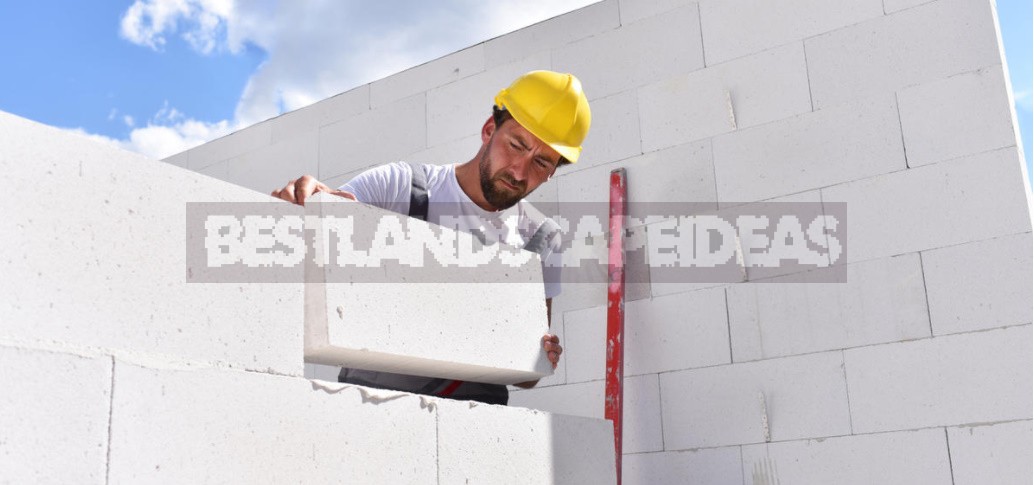
Unfortunately, there are enough disadvantages. Cellular concrete is very sensitive to the movement of the foundation. The slightest mistakes immediately turn into cracks on the walls, which actually negates the advantage of easy support and makes you do the same expensive and massive construction.
Another problem is hygroscopicity. The porous material is able to quickly absorb moisture, as a result of which it is gradually destroyed
The question of service life for all those who are engaged in the production of aerated concrete is the most painful. Such units have been produced since 1920, that is, they have been in operation for almost 100 years. However, the buildings of them older than 50 years can be seen only in those regions where the air temperature does not fall below zero even in winter.
In the conditions of frost, a block house is operated without any problems for no more than 30-40 years. Then cracks begin to appear in the walls, there are problems with the fastening of windows, and the heat-saving properties deteriorate. Perhaps for this reason, manufacturers usually do not specify warranty periods for their products.
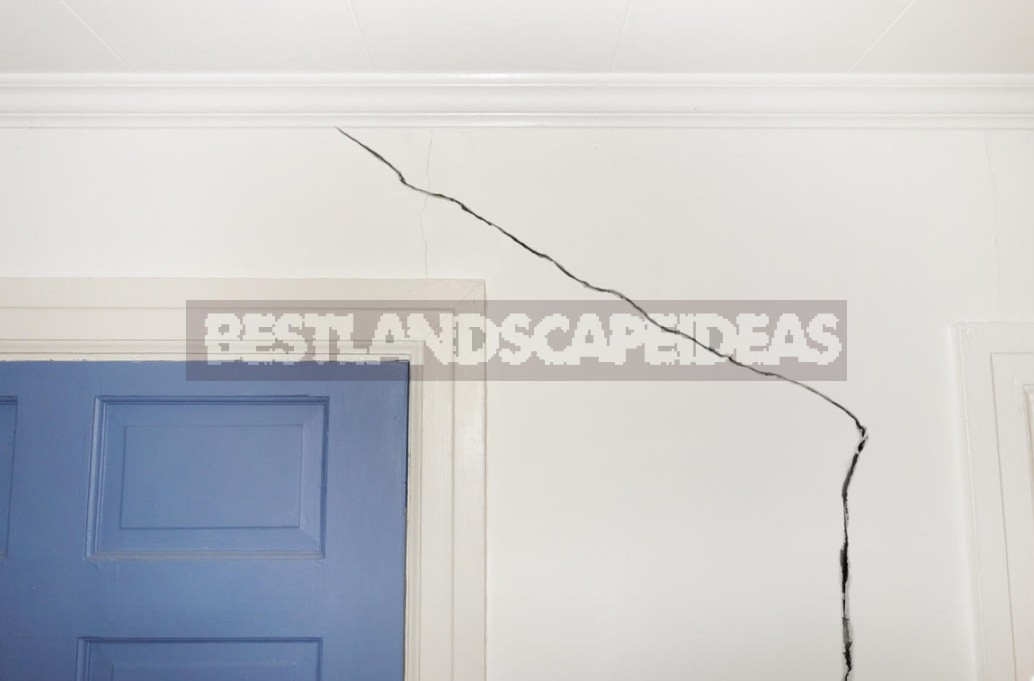
Cellular blocks are not strong enough to support concrete floors on them. You can use wooden ones, but before that you must fill in the concrete mauerlat. And this is already a cold bridge that requires insulation of the structure. Thus, it is probably not worth using porous concrete for the load-bearing walls of the house.
Which is better?
So, let’s draw conclusions. If you want to have a stone house, it is better to use a brick with a plaster finish, or expanded clay in a well masonry with a brick lining. These materials are the most suitable. Others are either too expensive (like ceramic blocks), or not strong enough and reliable (like cellular concrete).

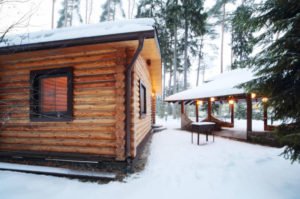

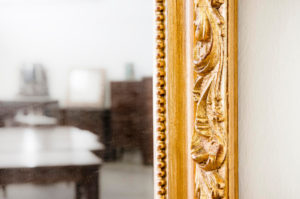
Leave a Reply